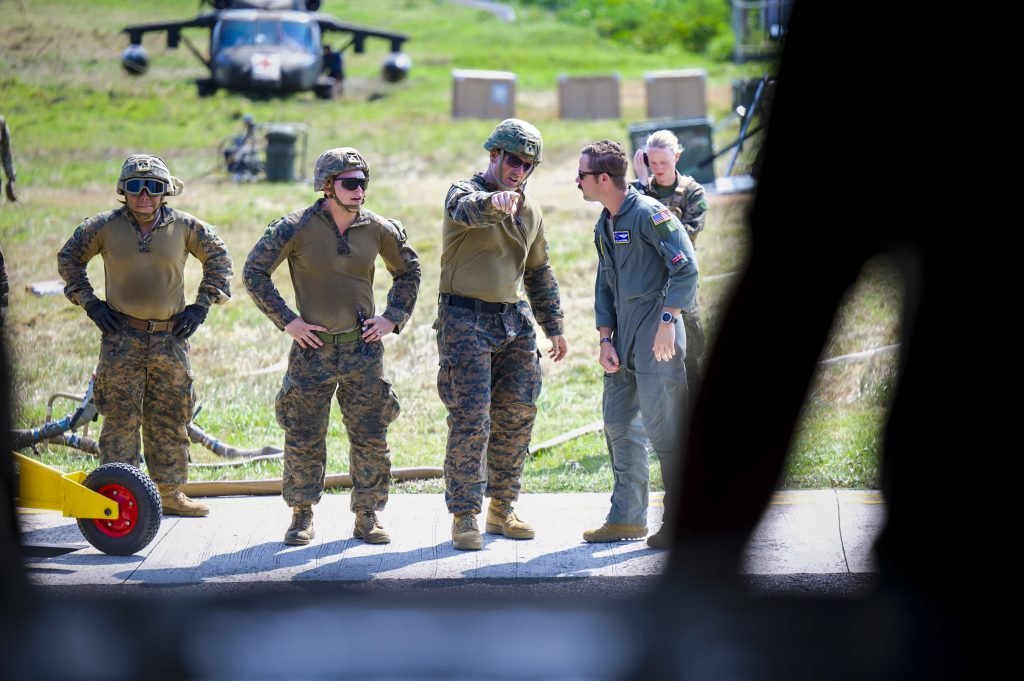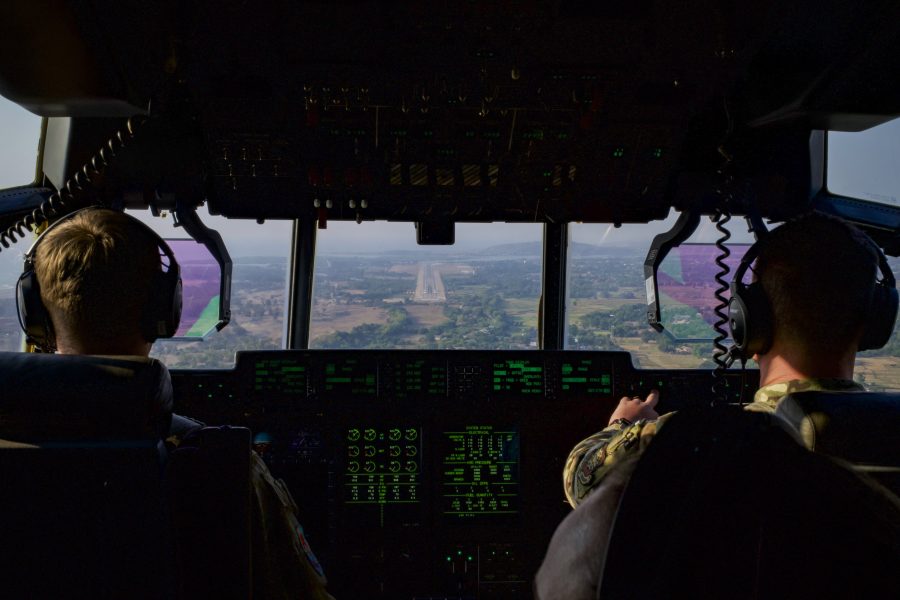The loud, rugged C-130J transport plane is not known for comfort, but that did not stop two crews assigned to the 40th Airlift Squadron from flying more than 26 hours and 7,000 miles from their home at Dyess Air Force Base, Texas, to Guam last month in an effort to prepare for potential conflict in the Pacific.
“The idea is from home station we will conduct the max endurance mission, the 26-hour mission, to get into theater as quickly as possible, and then execute follow-on missions,” Maj. Alex Leach, mission commander and the squadron’s assistant director of operations, told Air & Space Forces Magazine.
As a part of Air Mobility Command, which oversees Air Force transport and tanker aircraft, the 40th Airlift Squadron is getting ready to help carry the rest of the military’s troops and equipment across the vast distances of the Pacific. But with a range of 1,840 miles, the turboprop C-130J would run out of gas before it reached Hawaii.
Luckily, 40th Airlift Squadron had a secret weapon: external fuel tanks carrying 17,000 pounds of gas, roughly four extra hours of flying. The tanks powered the C-130Js all the way from west Texas to Hawaii without stopping, a previously “unheard of” feat in the Super Hercules, Leach said. The squadron is not the first to fly a C-130J with tanks, but it was the first in Air Mobility Command to use them in a maximum endurance operation (MEO), the term for very long flights meant to test the capabilities of the crew and the aircraft.
If an actual conflict took place in the Pacific, Hawaii would likely be just the first stop on the way to fighting further west. The first crew would not have time to rest, so the Dyess contingent brought along a second crew to fly the trip to Guam. Each crew was composed of three pilots and two loadmasters.
“After initial takeoff [from Dyess], we more or less banned the second crew from the flight deck,” said Leach. “We wanted them to rest mentally and physically as much as they could.”

Easier said than done: the plane’s loud engines and vibrations makes getting rest a challenge, the major said. But the Airmen hung up hammocks to mitigate the rumbling and marked off a section near the back where the second crew would not be disturbed by others walking back and forth.
Improving human performance in such conditions is one of Air Mobility Command boss Gen. Mike Minihan’s top objectives, since some tanker and transport crews may find themselves flying for 72 hours or longer in a near-peer conflict. Aircrews are using biometrics and healthy habits to inform better strategies for MEOs, and medical experts from the 7th Bomb Wing rode along on the long flight, which was dubbed ‘Hazard Leap,’ to help the crew and learn from the experience.
“They recommended not being on your phones: normal, ‘go to bed’ kind of techniques. Most people tried to read a book or listen to a podcast,” Leach said. “You try not to dramatically change what you do before you go to bed and eat when you normally eat, to keep it as healthy as you possibly can.”
It seemed to do the trick; by the time Leach and the rest of the second crew took over in Hawaii, they were “ready to go,” he said. “Not 100 percent but definitely able to operate the aircraft with no problem.”
Hazard Leap ended after the crew landed in Guam on April 20, but Hazard Spear was just beginning. In that exercise, Dyess Airmen helped transport troops and equipment for the 4th Marine Regiment during Exercise Balikatan 2024, an annual operation where U.S. and Philippine troops train together. Specifically, the crew practiced landing at blacked-out airfields, forward area refueling, and loading and off-loading High Mobility Artillery Rocket Systems (HIMARS).
“While we all know how to upload these things at home, we don’t really do it too often,” Leach said. “So for the Marines, and for us, there was a moment of ‘where do we put this thing in at again?’ It was an extremely valuable experience for us.”

Rapidly moving HIMARS between islands is a key element of the U.S. battle plan for the Pacific. Leach was impressed to see the rocket artillery platform’s GPS system tie into the C-130’s so that when it arrived in a new location, the HIMARS “knows where it’s at and gets a firing solution pretty much instantaneously once it gets off the aircraft,” he said. “That was something unique that our crews got to see.”
Later, after delivering a fuel bladder to Marines on another island as a part of Balikatan, the Dyess crew was told that they were the largest aircraft to have ever landed there.
“These little islands in the north Philippines are extremely difficult for vessels to get into,” Leach said. “So for us to fly from Guam, which obviously is a big hub, offload all the equipment, all the people, all the fuel that they need to conduct combat operations in the Luzon Strait, is very important strategically.”
Like the 26-hour flight to Guam, the external fuel tanks made it possible.
“We didn’t have to upload any fuel, in fact we gave them fuel and were able to fly back on the same day, with literally zero ground support,” Leach said. “It was just us and the Marines. And that’s it.”
